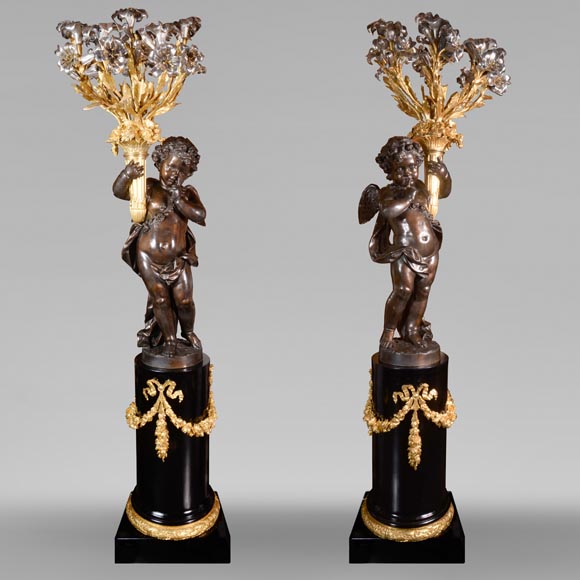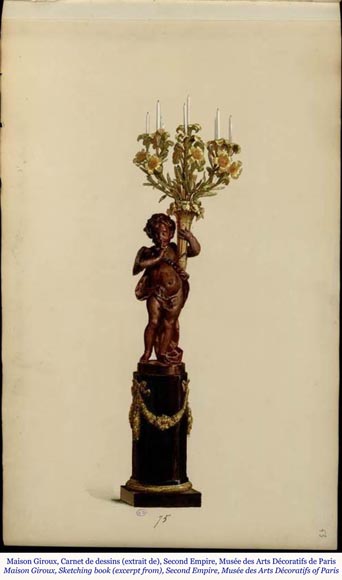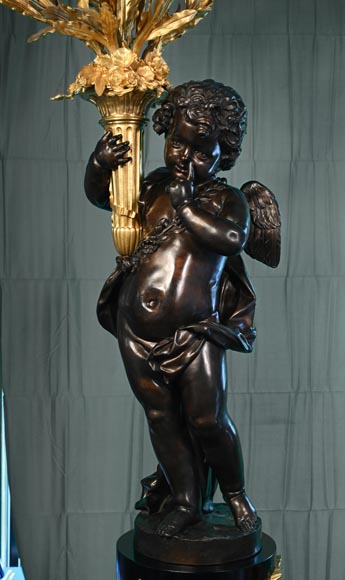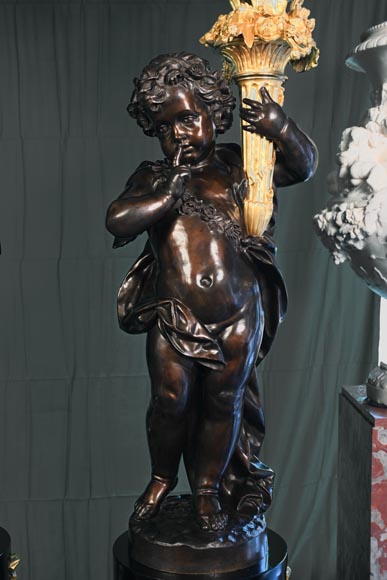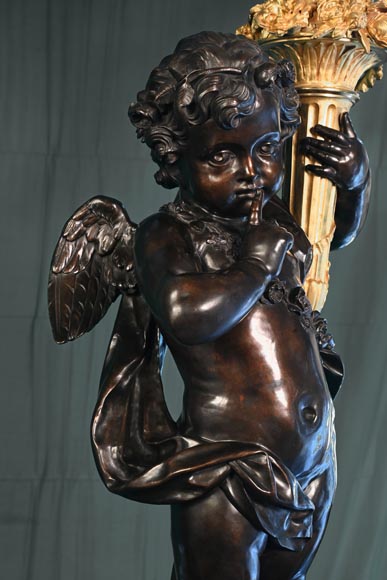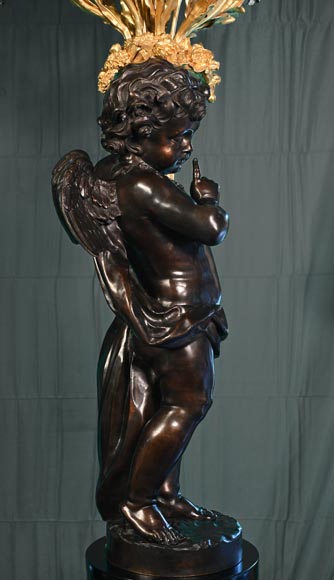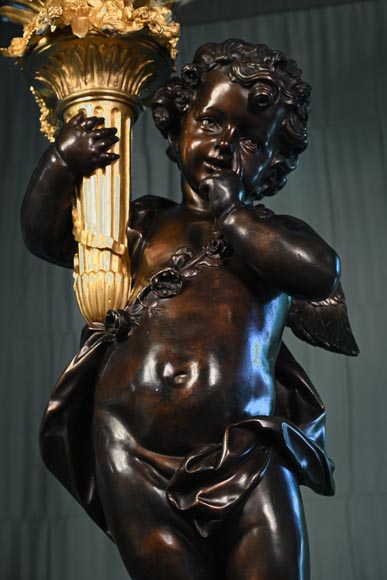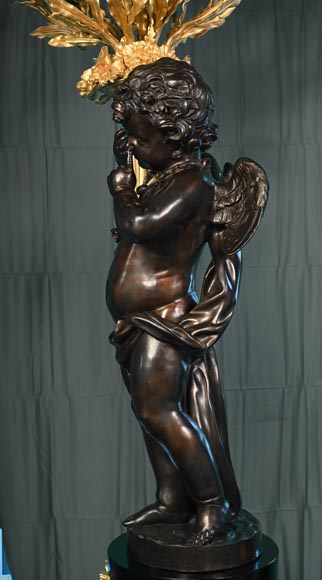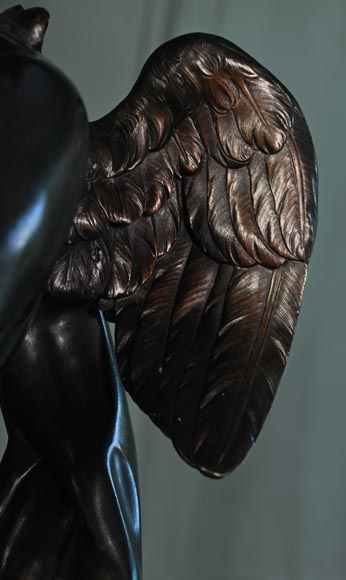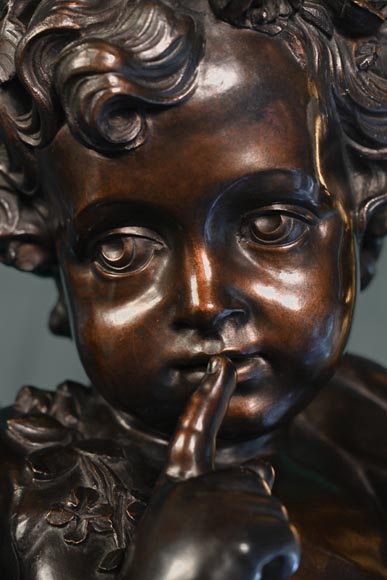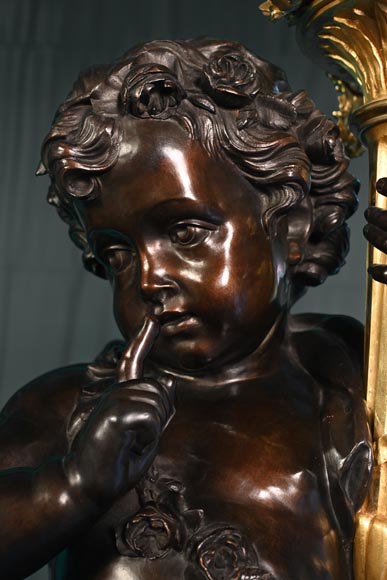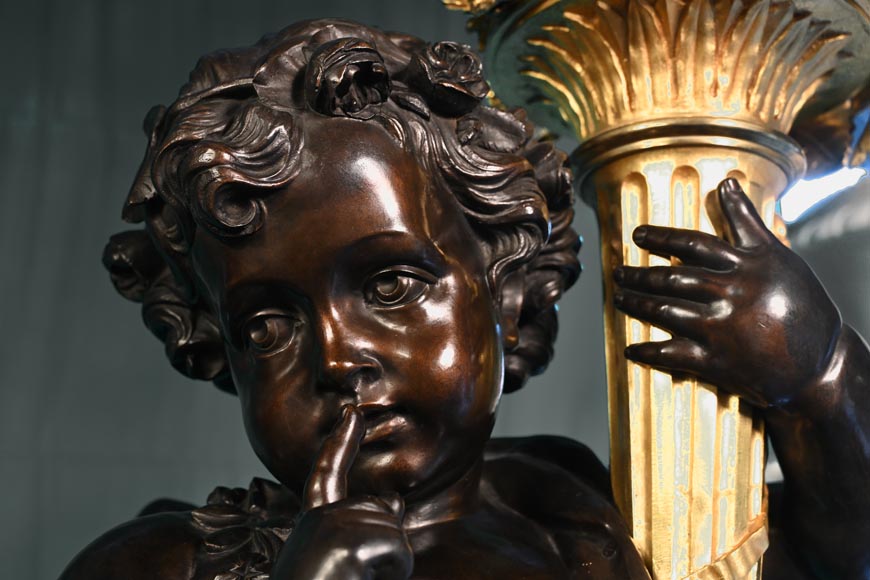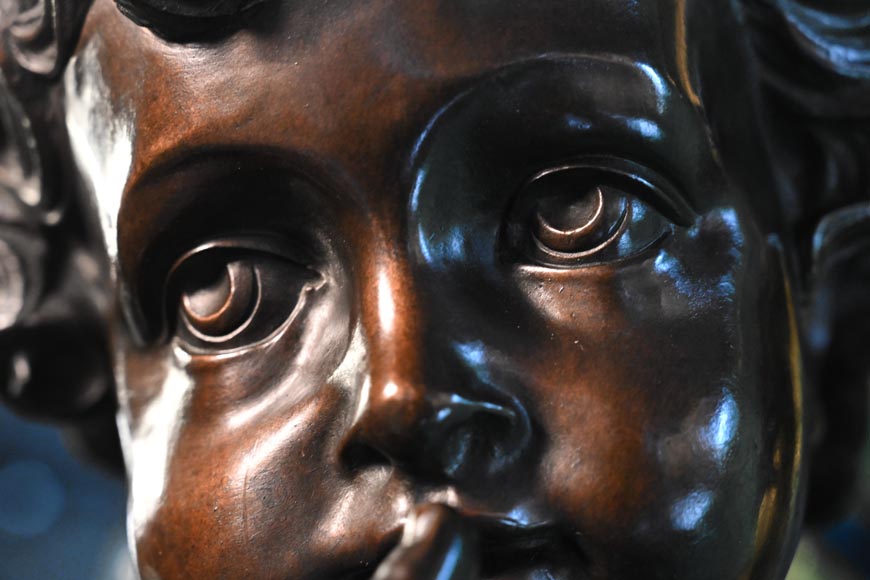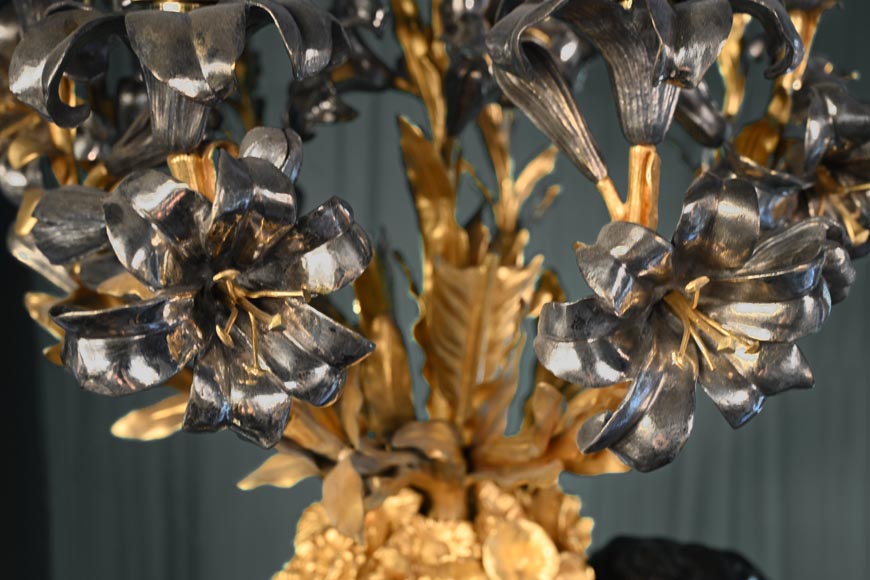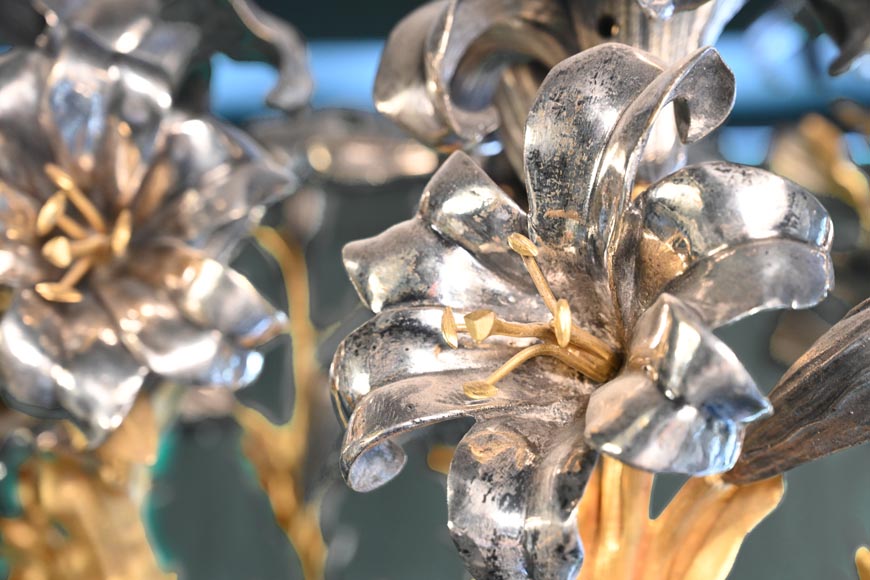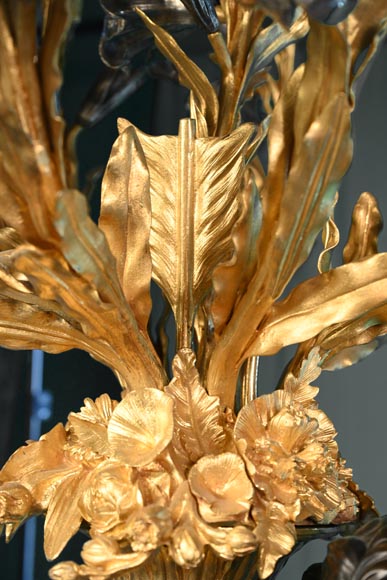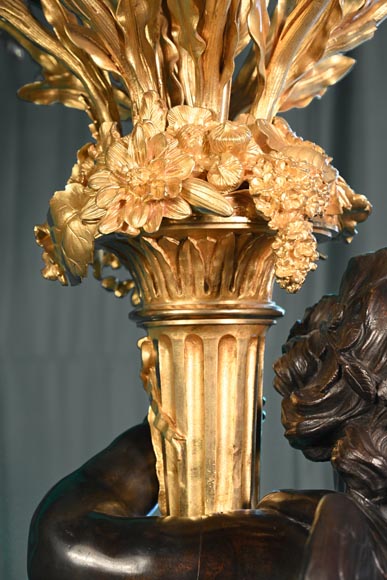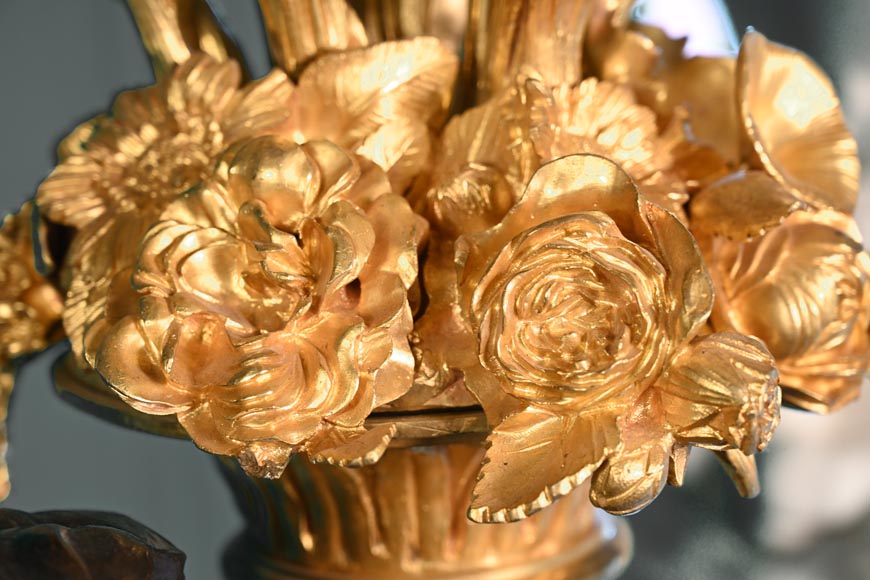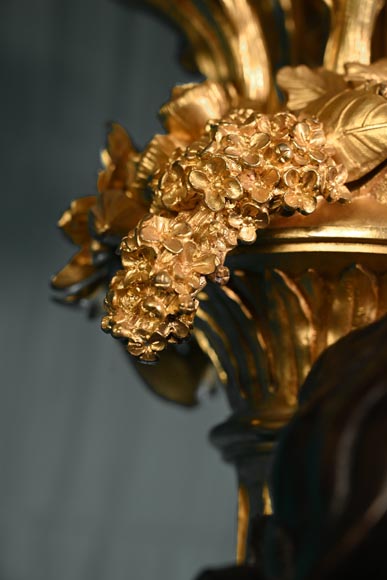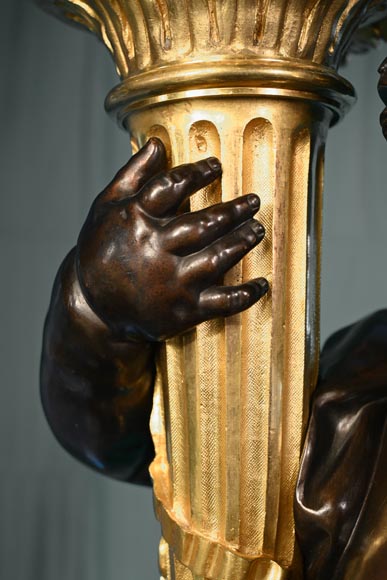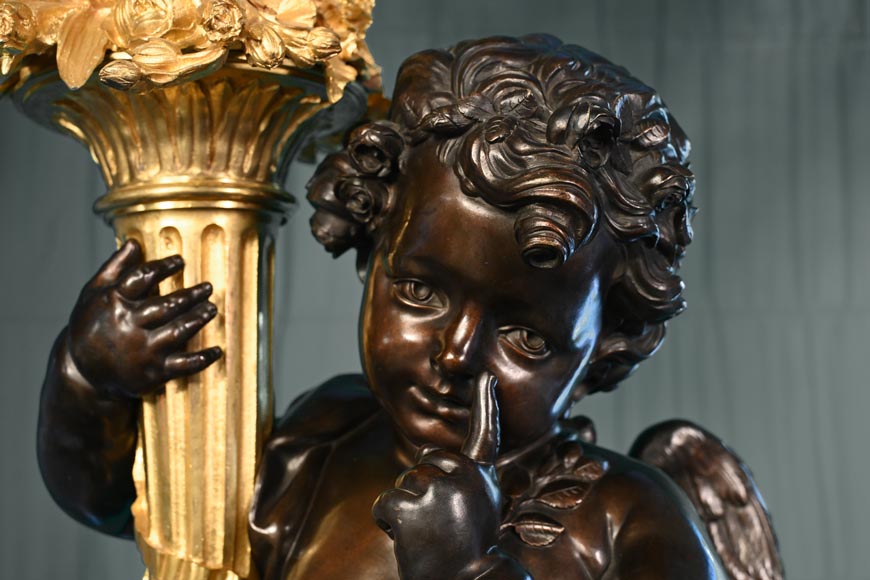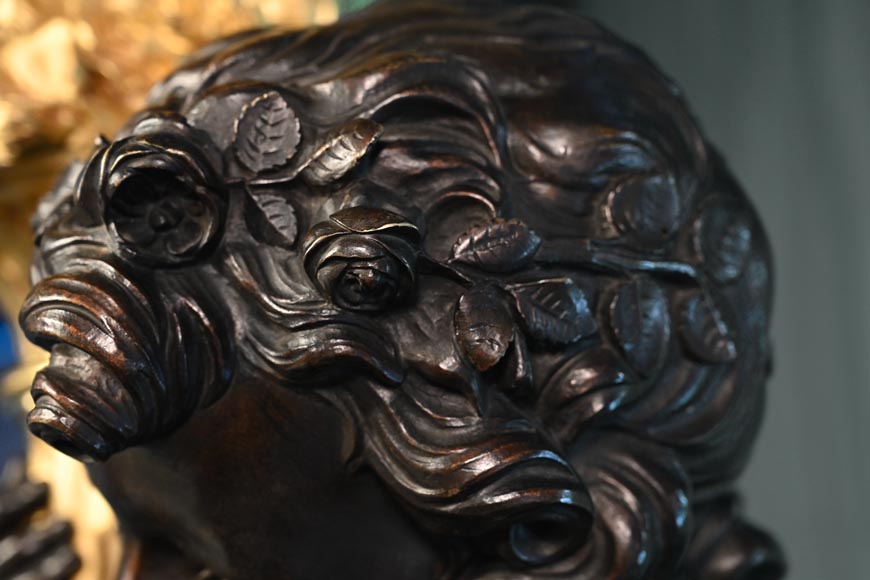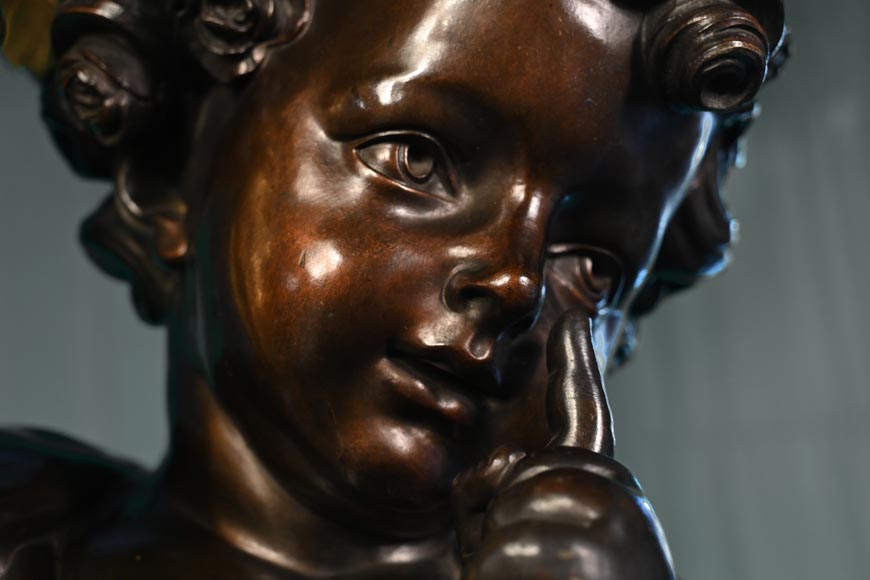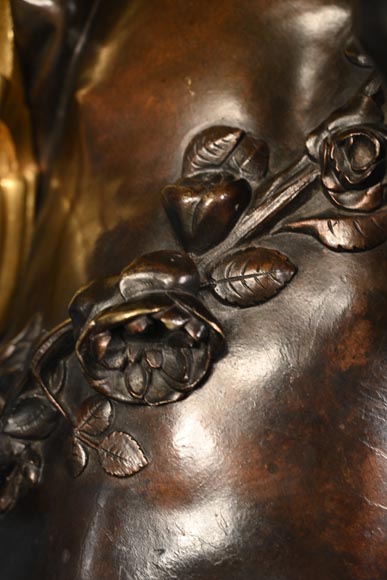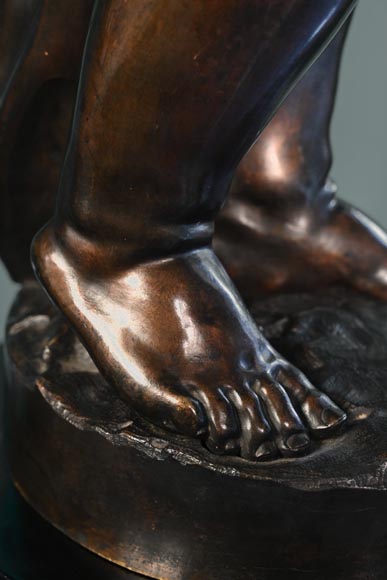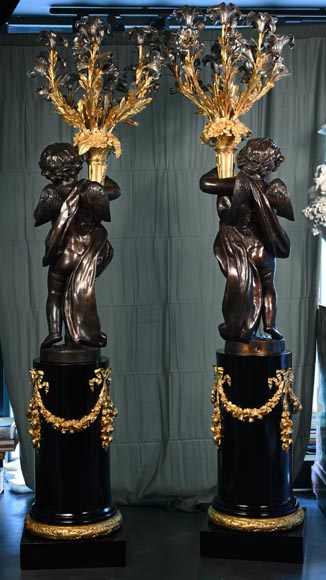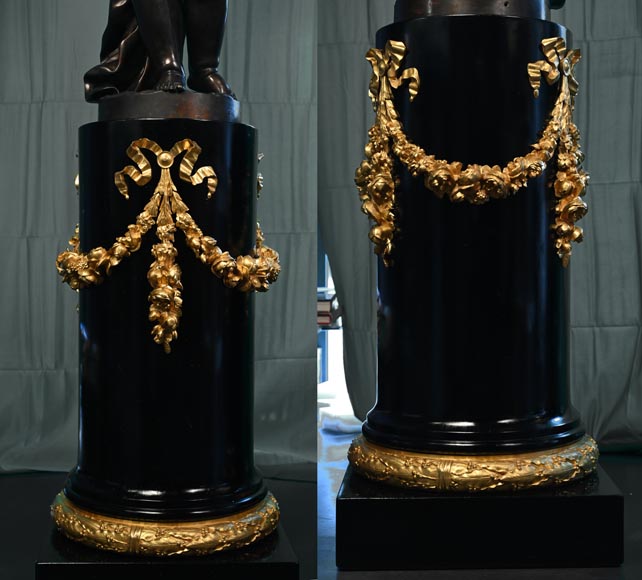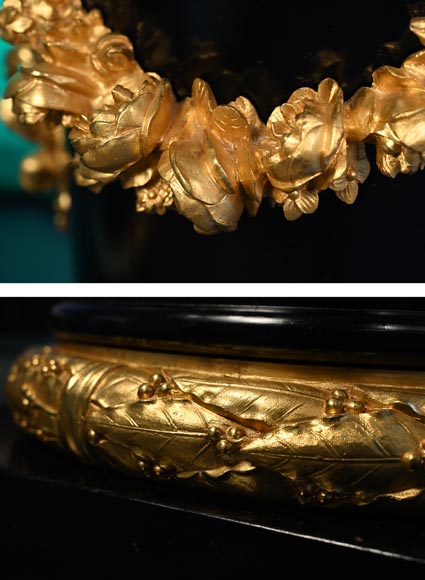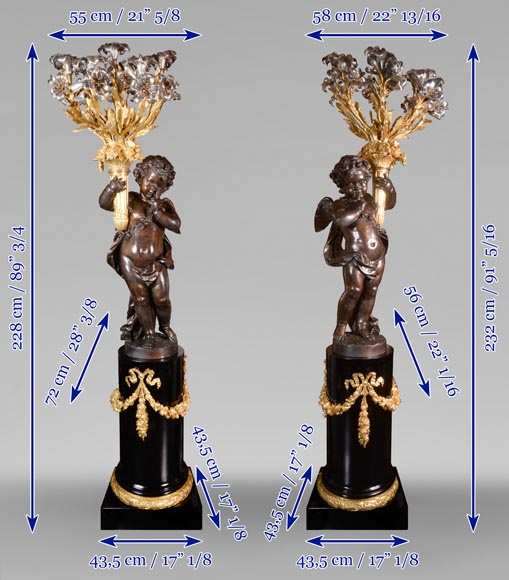Style Napoleon III / Ref.13200
Auguste-Louis Marquis (bronze maker) for the Maison GIROUX, Pair of torchères with 9 lights in gilded, silvered and burnished bronze, circa 1855
Dimensions
Width 22'' ⅞ 58cm
Height 91'' ⅜ 232cm
Depth: 28'' ⅜ 72cm
Origin:
19th century.
Status:
Perfect condition.
This splendid pair of candelabrum was made by Auguste-Louis Marquis (bronze maker) for the Maison Giroux circa 1855 in gilded, silvered and burnished bronze, the set on a cylindrical stand made of blackened wood resting on a square base.
Reflection of the eclecticism from the second half of the 19th century, our pair of candelarbum illustrates the exuberance of the Napoleon III style and the classicism of the Louis XVI style. The bronze maker has represented here the theme of the silent children, through winged putti with one finger put on their mouth, in burnished bronze. From their free hands, they hold a gilt bronze quiver where is resting a roses bouquet below large lily flowers being shaped to be light arms and of which the flowers are lightened up with a beautiful silver work. The putti are lightly dressed with a drapery hold by a strap roses garland and are bearing a crown of this same flower in their hair. About the cylindrical stand made of blackened wood, it is very typical of the Louis XVI style with its gilded bronze decoration of flowers garlands and laurel leaves flowers on which they stand.
We find on a sketching book indexing the works made by the maison Giroux, conserved in the Musée des Arts Décoratifs of Paris, a drawing depicting one of our candelabra, allowing us to confirm that they were sold by the maison created by Alphonse Giroux in the late 1790’s.
This store which was originally selling all kind of supplies and small objects such as paints, varnishes, albums, writing-papers, fans, toys, boxes and souvenirs, but also lithographs, drawings and watercolors, considerably developed in the first decades of the 19th century. First, because they count among the clients, important persons such as the Duchesse de Berry, Louis XVIII or even Charles X, then by the drive given by Alphonse Giroux’s sons who joined the firm in 1833. Thus, Alphonse-Gustave Giroux, the eldest son, had the idea to sell small furniture. Even though he was an artist himself, he worked like furniture dealers of the 18th century, with artists who did not have the right to put their signature and exerted a hold over the design of the creation that he chose. He also decided to move the store in the new Opera district on the corner of the 43 boulevard des Capucines and the 24 rue Neuve des Capucines in 1855.
On this same year, the company which had already won medals for the quality of its production during previous events, sells during the World Fair, to the Impress Eugénie, a bonheur du jour, conserved today in the château de Compiègne. In 1867, the store direction is given to Ferdinand Duvinage, Harinkouck and Brune. Little things are known about Harinkouck and Brune who seem to have been associated for a short period of time as Duvinage remains the only one in 1874.
A similar pair, a little bit smaller, with only 7 light arms, and made entirely of gilded bronze is illustrated on Marie-France Dupuy-Bellet’s book: Les bronzes du mobilier national 1800-1870, on the page 303.
The handwritten documentation of the Mobilier national allows to name their author: Auguste-Louis Marquis, who delivered them to the Garde-Meuble in April 1855 for the Palais Royal. They are next send, 22 years later to the Palais de l’Élysée where their presence is mentioned in the Ladies Salon in 1894.
The maison Chaumont and Marquis, founded in 1731, made and sold bronze, chandeliers, clocks, candelabrum, etc. They participated during the World Fairs of 1862 and 1867.
Thus, as written above, it seems that Alphonse Giroux asked Auguste Marquis to make a model of candelabrum from his original one, while imposing his modifications that we can notice by comparing the formal differences between the two pair of candelabrum. This manner to ask other artists to create models is really usual for the important companies selling art in the late 19th century. We can also mentionned l'Escalier de Cristal which worked with Gabriel Viardot, Emile Gallé and others, or Edouard Lièvre who worked for the maison Barbedienne.
Bibliography :
Marie-France Dupuy-Bellet, L’heure, le feu, la lumière, Les bronzes du mobilier National 1800-1870, Editions Faton, 2005
Informations
Price: on request
Recommended for you :
Dimensions:
Width: 34
Height: 67
Depth: 34
Dimensions:
Width: 52
Height: 75
Depth: 39
Dimensions:
Width: 19
Height: 16
Depth: 10
Dimensions:
Width: 47
Height: 23
Depth: 26
Dimensions:
Width: 27
Height: 67
Depth: 23
Dimensions:
Width: 29
Height: 39
Depth: 19
Dimensions:
Width: 46
Height: 19
Depth: 17
Dimensions:
Width: 28
Height: 43
Depth: 43
Dimensions:
Height: 78
Diameter: 68
Dimensions:
Width: 35
Height: 73
Depth: 8
Dimensions:
Width: 25
Height: 40
Diameter: 50
Dimensions:
Width: 32
Height: 46
Depth: 17



